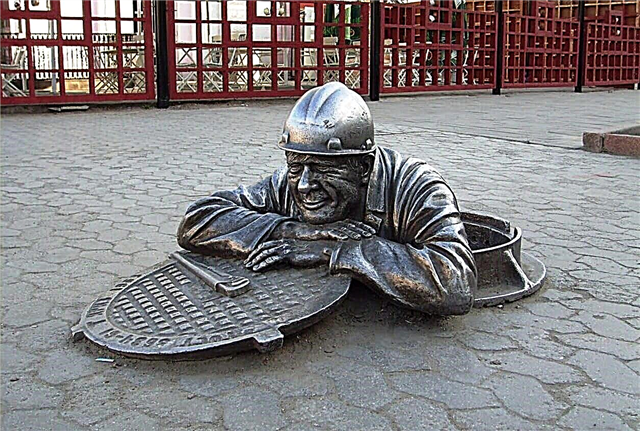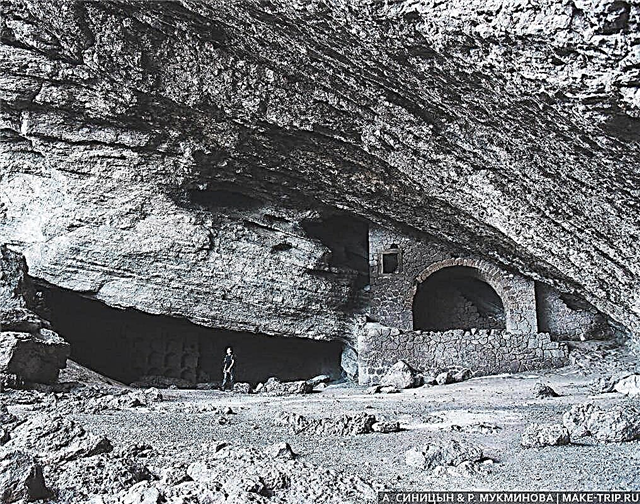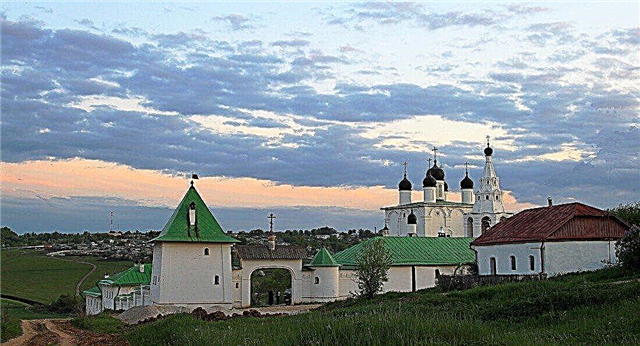Tula is an ancient city, its history is closely related to the history of the development of the state. The religious formation of Tula went through all the difficult stages together with the country. The monasteries survived the reform of Catherine II to destroy monastic estates, the destruction of churches and temples during the Soviet era, devastation and desolation at the end of the 20th century. The restoration of the monasteries began only at the beginning of the 21st century. Shrines that were considered lost have been preserved by the parishioners.
The operating monasteries of Tula are large temple complexes. On their territory there are residential and household buildings, chapels, hotel houses for pilgrims. Beautiful gardens are laid out. Pilgrims from all over the Tula region come to venerate the relics of the holy martyrs, miraculous icons. Tourists may be interested in painting on the vaults of monastic temples and churches.
The main monasteries of Tula and the Tula region
The most famous Orthodox male and female monasteries. List, photo with titles and descriptions!
Anastasov monastery
Named in honor of the first abbot after the construction of the monastery, Abbot Anastasia. It was erected in the 16th century instead of a wooden church on the banks of the Upa River in the ancient city of Odoyev. In the 18th century, as a result of the reforms of Peter I, he became impoverished and began to perform the functions of an ordinary church. Completely closed in 1931. But since 2002, the monastery has been under reconstruction, new elements have been added in the style of the "pre-Petrine" time.
Address: s. Anastasovo

Venev-Nikolsky monastery
This monastery is one of the oldest in the Tula region. Some sources say that this monastery was built during the first centuries of the spread of Christianity in Russia. Of the entire monastery, only the two-storey Nikolo-Assumption Church has survived. All its walls and vaults are painted with floral ornaments. There are many old icons in the monastery, some of them, such as "St. Elizabeth", were created in the 18th century.
Address: Dedilovskie vyselki, s. Venev Monastery

Holy Kazan Monastery
Convent in the village of Kolyupanovo. It is considered one of the youngest monasteries in Russia - it was founded in 1995. It was erected on the site of a wooden church that burned down at the end of the 18th century. The relics of blessed Euphrosyne, buried in the monastery, are the shrines of the monastery. According to believers, the holy spring of blessed Euphrosinia near the monastery helps in curing even the most serious illnesses.
Address: s. Kolyupanovo

Theotokos-Rozhdestvensky monastery
Presumably founded in the 15th century. The shrine of the monastery is the Tikhvin icon of the Mother of God. In Soviet times, the monastery was ruined and abandoned; its restoration began in 1988. The parishioners kept the icon all this time. And one of the bells was found in the building of the Palace of Culture of the Mashzavod. In pre-revolutionary times, a parish school was founded at the church, and since 2008 an orphanage has been operating at the monastery.
Address: Tula, Gorelki settlement, st. Mirnaya, 17 B
Site: inokini-tula.ru

Kazan Paporotsky Monastery
Convent, located in the village of Ferorotka. It was erected in 2001 at the temple in honor of the Kazan Icon of the Mother of God in the traditional Orthodox style - with an octagonal dome and a high bell tower. Among the vaults, painted with oil painting, there is a composition depicting the Last Judgment. The monastery accepts pilgrims; for their accommodation, the gatehouse was converted into a guest house. The monastery has interesting icons from the early 20th century.
Address: s. Fern

Mother of God Shcheglovsky Monastery
Founded in 1860. The first building was the two-storey Cathedral Church, and then the rest of the monastery buildings - a tower, residential buildings, a bell tower above the entrance gate, walls 550 meters long. The permission to open the monastery was received only in 1867. The monastery is male. The only one in Russia, which is named after the icon of the Most Holy Theotokos "Mammal". A Sunday school is open at the monastery.
Address: Tula, st. Liza Chaikina, 1
Website: www.mlekopit.ru

Holy Dormition Monastery
Monastery in the city of Novomoskovsk. Its history began at the end of the 20th century with the creation of the first Orthodox community in the city. Believers from all over the Tula region come to this monastery to see the icon "Seeking the Dead". It was transferred to the Holy Dormition Monastery from the Dormition Church in the village of Sebino. The monastery also has a reliquary with particles of the relics of Matrona of Moscow, who blessed the painting of the miraculous icon.
Address: Novomoskovsk, Parkovy passage, 6
Site: monuspen.ru

Belevsky Spaso-Preobrazhensky Monastery
Presumably founded in the 15th century. The monastery book contains a record of Ivan the Terrible's visit to the monastery in 1557. The only monastery in Tula that survived the destruction during the Soviet era. Only the domes were damaged, and the premises of the church were given over for housing. The restoration began in 2008 and continues to this day. The monastery is part of the picturesque landscape of the city of Belev, it can be seen from afar even before entering the city.
Address: Belev, st. Preobrazhenskaya, 1
Website: belev-monastery.rf

Exaltation of the Cross Belevsky Monastery
This convent has a difficult fate. It was founded presumably in 1625, and was abolished already in 1764 by Catherine II. In 1768 it was restored to its status. In the 1920s, it was closed again, this time by the Soviet regime, and the buildings of the monastery became ordinary living quarters. In the 90s of the last century, the monastery was completely abandoned. The restoration of the monastery began only in 2007.
Address: Belev

Holy Vvedensky Makaryevsky Zhabynsky Monastery
Founded in the 16th century by Elder Onifrius on the site of the ancient Zhabyn settlement. This is a flat area on the banks of the Oka River. The main development of the monastery was during the reign of Abbot Benedict from 1821 to 1851. New churches, utility buildings, baths were built. There is an orchard and a linden alley. Most of these buildings were destroyed during the hostilities of the Great Patriotic War.
Address: s. Zhabyn
Site: zhabyn.cerkov.ru












